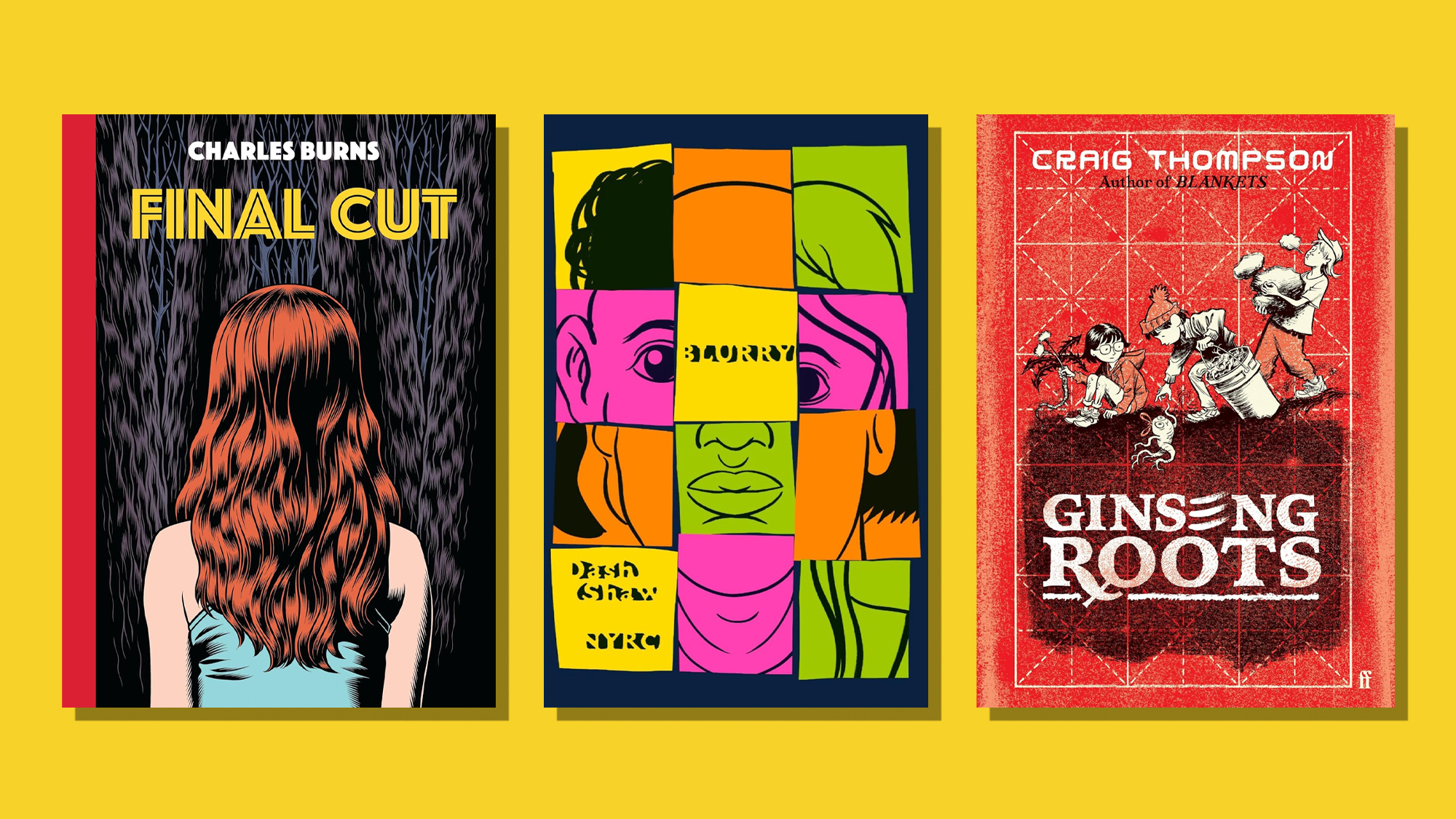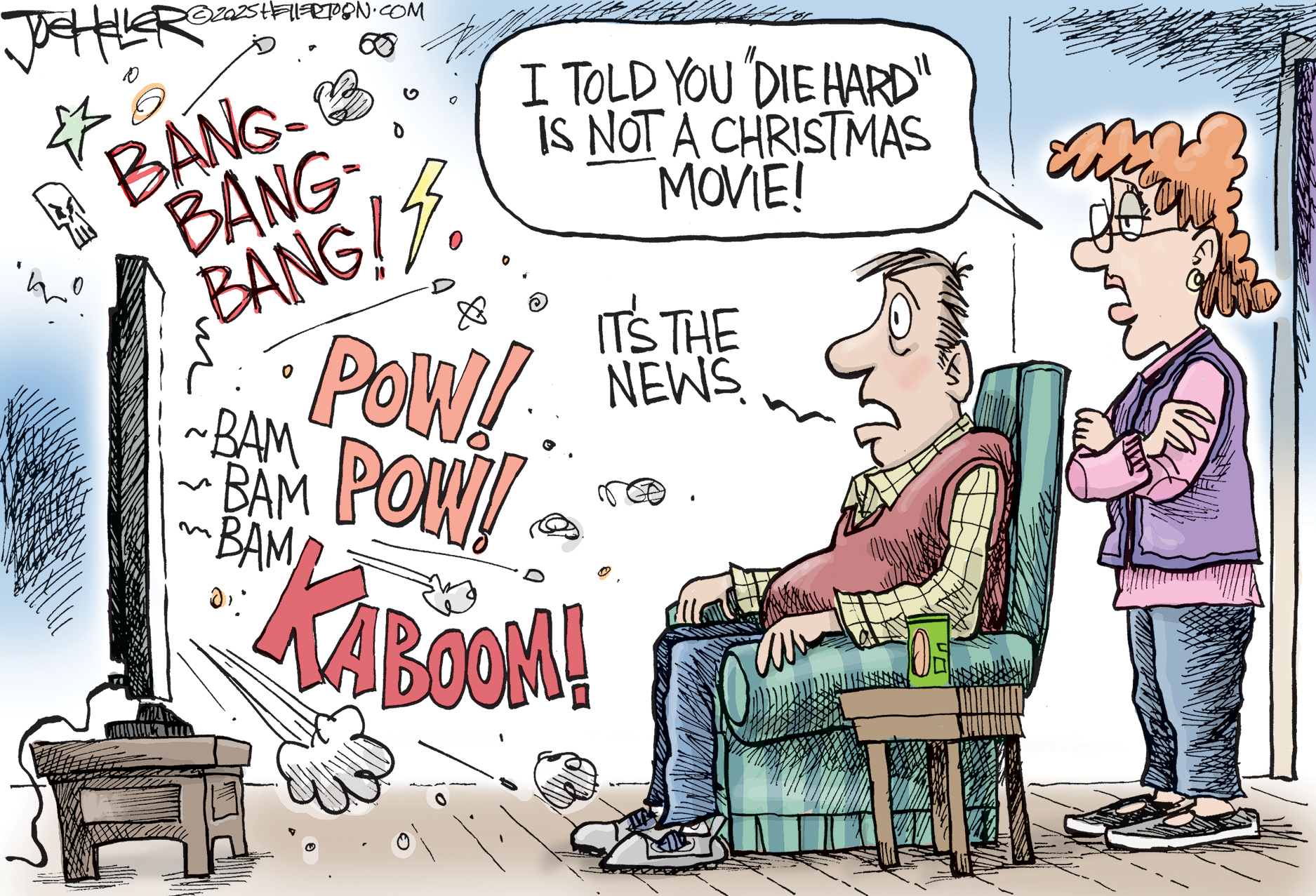The best graphic novels
These inventive illustrated books will transport you to another world

From memoirs to horror and everything in between, graphic novels entertain, inform or even scare readers with their striking visuals and text. These are some of the most gripping books to get you started, including a dreamlike account of an uneventful Sunday and a remarkable retelling of Mark Twain's "Huckleberry Finn".
This Beautiful, Ridiculous City by Kay Sohini
In her debut graphic memoir, Kay Sohini pays tribute to her love for New York City, a "crush" she developed while watching American TV shows like "Friends" as a young girl in Kolkata, said Rachel Cooke in The Guardian. Sohini reflects on her experience of leaving her hometown at 24 in the aftermath of a coercive relationship. As she begins a PhD programme in the Big Apple, she finally transforms the city she has "romanticised" her whole life into a home. Visually, Sohini's graphic novel is a "tour de force", said Tehneer Oksman in The Washington Post. She uses "bright" and "vivid" colours, and "exquisitely appealing" geometric page layouts to bring the city to life. It's a beautiful piece of "careful artisanship", reminding readers that "every representation of New York is a kind of revealing fantasy".
Final Cut by Charles Burns
Burns uses the iconography of 1950s and 60s horror to capture "teenage angst" and the "hidden world of adolescence", said Rob Salkowitz in Forbes. The action follows aspiring filmmaker Brian, a high schooler who becomes obsessed with the "beautiful and magnetic" Laurie, the star of the sci-fi movie he is directing, said Sam Thielman in The New York Times. It's a "tragic self-portrait" sketched with the type of "ironic hindsight that a Warhol or Lichtenstein would envy". Burns creates a vivid world with his "sharp border lines" and "tightly contained tracts of ink", said Jacob Broden in The Washington Post. His art remains as "precise and compelling" as ever.
The Week
Escape your echo chamber. Get the facts behind the news, plus analysis from multiple perspectives.

Sign up for The Week's Free Newsletters
From our morning news briefing to a weekly Good News Newsletter, get the best of The Week delivered directly to your inbox.
From our morning news briefing to a weekly Good News Newsletter, get the best of The Week delivered directly to your inbox.
Ginseng Roots by Craig Thompson
Thompson recounts his childhood summers in Wisconsin farming ginseng – an "essential" ingredient in Chinese medicine – with his brother for a dollar an hour in this powerful memoir, said Adam Rutherford in The Guardian. Both a graphic novel and a piece of "social commentary", his book charts the cultural history of the "difficult-to-grow" crop alongside the "minutiae" of life in the rural Midwest of the 1980s. Originally published in a series of different issues from 2019 to 2024, it is "epic in length and breadth, but simultaneously pleasingly narrow in scope". A fascinating story that spans everything from global politics to religion, Thompson's book is "soulful, funny and exquisitely drawn". It's a "modern classic".
Sunday by Olivier Schrauwen
The latest graphic novel by Schrauwen follows a fictionalised version of the author's cousin, Thibault, having an extremely unproductive day. It's an "enormous, wonderfully funny" exploration of the perception of memory, rendered in "vivid Risograph tone", said The New York Times. Illustrated in a "surreal colour palette", the action follows Thibault as he drinks, gets high, overthinks a message to his girlfriend and "dissolves into the passing hours", said The Washington Post. In all, Schrauwen's humorous depiction of a "lost day" is a "surprisingly winning, witty read – often funny and always fun".
Big Jim and the White Boy by David Walker and Marcus Kwame Anderson
This remarkable reimagining of Mark Twain's 1884 "Huckleberry Finn" follows runaway slave Jim on his journey with Huck down the Mississippi River, with added "depth, structure, historical detail", said Forbes. The graphic novel frames Jim and Huck in their 90s, reminiscing on their past adventures, expanding "the canvas of Twain's work without losing the scope, flavour and humour of the original". Offering more "nuanced perspectives on race relations", Walker and Anderson's work is a "modern classic" that goes "well beyond the retelling of the familiar story".
Feeding Ghosts by Tessa Hulls
Using "expressionistic" black and white imagery, Hulls' debut memoir "Feeding Ghosts" follows three generations of Chinese women, said Salkowitz in Forbes. The 2025 winner of the Pulitzer Prize for memoir or autobiography it's only the second graphic novel ever to scoop the award. Hulls tells the story of her grandmother, a persecuted journalist who fled China and suffered a mental breakdown; her mother's elite upbringing in Hong Kong; and her own childhood in the US. Over the "nearly decade-long writing experience" Hulls has filled her book with "compelling characters and haunting illustrations", said Robert Ito in The New York Times. It's a fascinating read.
A free daily email with the biggest news stories of the day – and the best features from TheWeek.com
Blurry by Dash Shaw
Shaw's sprawling book is filled with characters "discovering themselves and their (blurry) connections to each other and the world" through a series of seemingly mundane encounters and domestic scenes, said Salkowitz in Forbes. Successfully implementing "a story-within-a-story-within-a-story structure", Shaw's "intricate plot" unfolds with "perfect clarity", said Theilman in The New York Times. "The decision to read it is an easy one."
-
 Critics’ choice: The year’s top 10 movies
Critics’ choice: The year’s top 10 moviesFeature ‘One Battle After Another’ and ‘It Was Just an Accident’ stand out
-
 The small Caribbean island courting crypto billions
The small Caribbean island courting crypto billionsUnder the Radar Crypto mogul Olivier Janssens plans to create a libertarian utopia on Nevis
-
 Political cartoons for December 21
Political cartoons for December 21Cartoons Sunday’s political cartoons include Christmas movies, AI sermons, and more